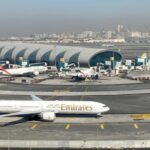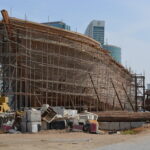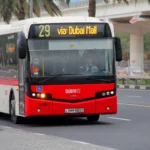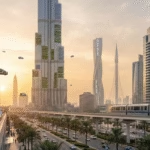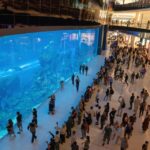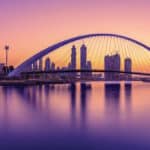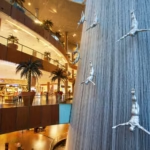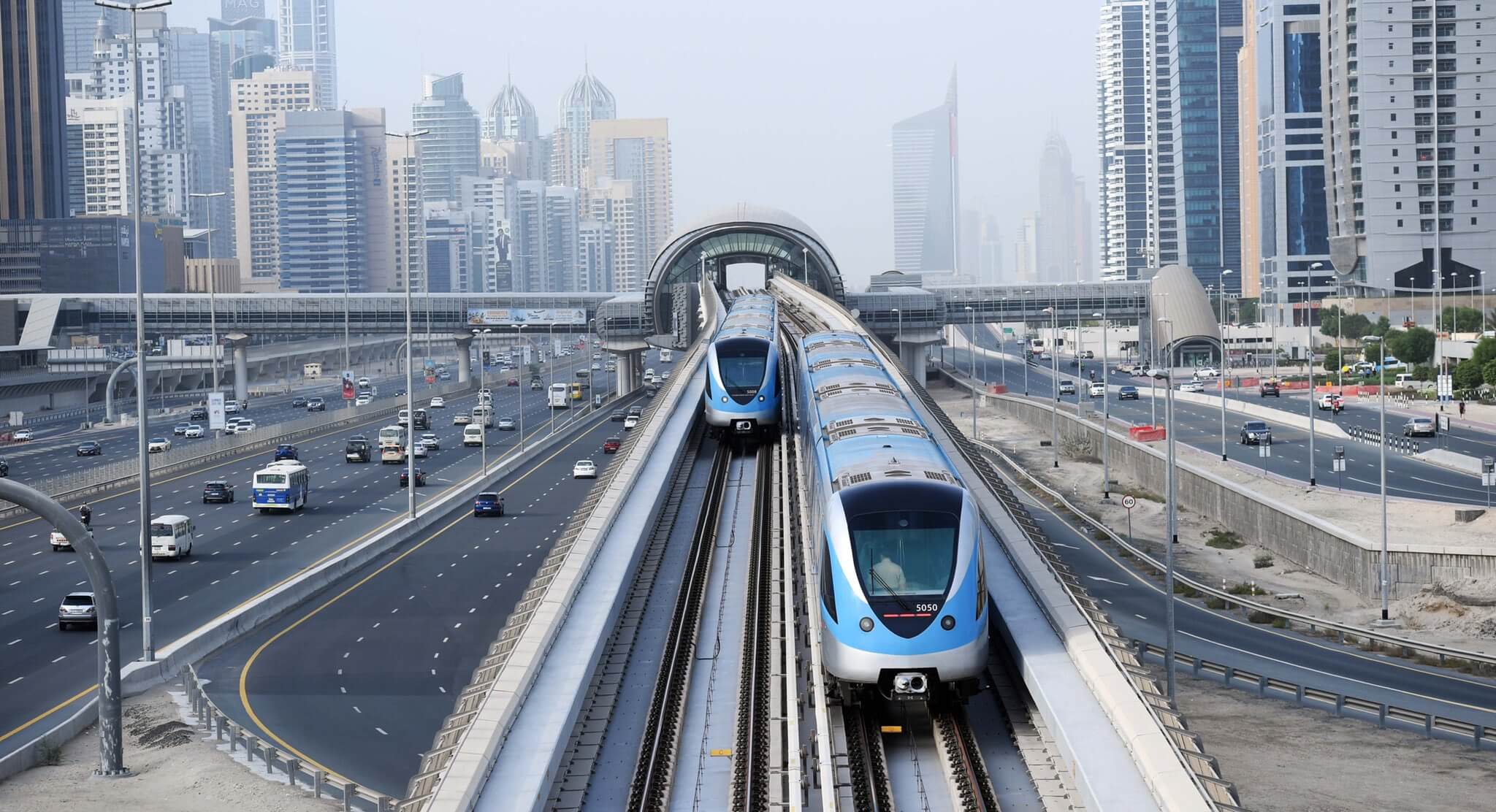
Dubai Metro
Introduction
Dubai, the vibrant metropolis of the United Arab Emirates, is known for its awe-inspiring architecture, lavish lifestyle, and unparalleled innovation. Among the many marvels that adorn the city, the Dubai Metro stands tall as a shining example of futuristic transportation.
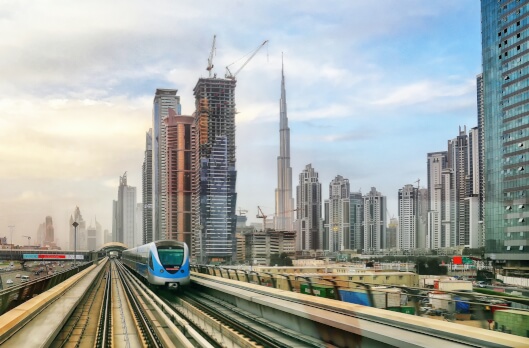
This modern marvel of engineering has transformed the way residents and tourists explore the city, providing a seamless and efficient mode of travel. In this article, we will delve into the fascinating world of the Dubai Metro, exploring its origin, construction history, lines, stations, ticket types and prices, retail options, timetable, passenger numbers, and future plans and strategies.
I remember when the Dubai metro opened and what a revelation it has been! In fact, you could argue that it has been to successful because the trains are packed during peak hours. Still, the metro was desperately needed to relieve the traffic congestion in the city at the time. Now in 2023, the traffic is building up again and the metro needs expansion quickly, and plans are underway for the next phases.
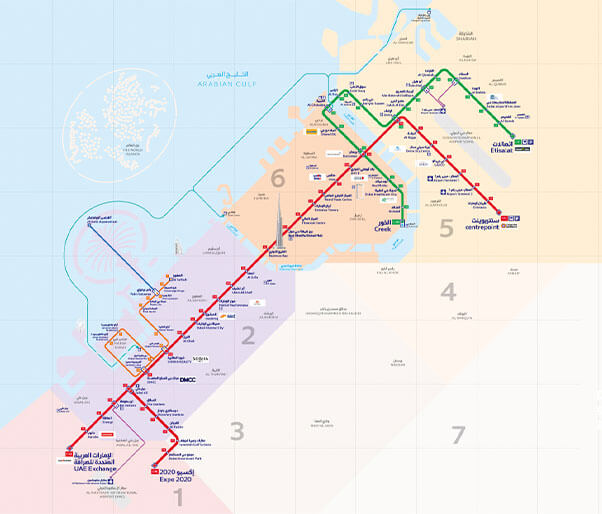
Origin and History of Dubai Metro
Building the Foundation
The inception of the Dubai Metro can be traced back to the early 21st century when the government of Dubai recognized the need for a reliable and efficient public transport system to support the city’s rapid growth. The ambitious vision aimed to create a transportation network that would alleviate traffic congestion, reduce carbon emissions, and enhance connectivity. Extensive planning and feasibility studies were undertaken, and the groundwork for the Dubai Metro was laid.
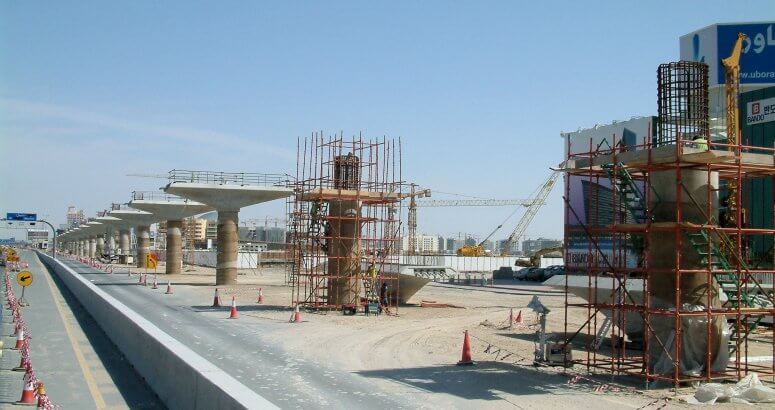
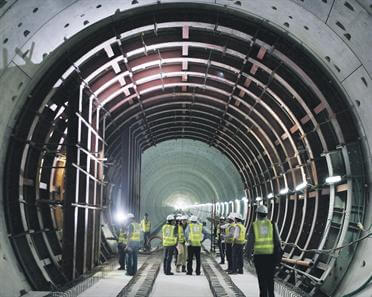
The Dubai Metro was first proposed in 1996, and construction began in 2005. The first phase of the metro, the Red Line, was opened in 2010. The second phase, the Green Line, was opened in 2011. The metro has been a huge success, and it now carries over 2 million passengers per day.
Inauguration and First Phase
On September 9, 2009, the first phase of the Dubai Metro was inaugurated with the opening of the Red Line, which stretches across 52 kilometers and connects prominent locations such as the Dubai International Airport, Burj Khalifa, and Dubai Marina. This marked a significant milestone for Dubai, as it became the first city in the Middle East to have a fully automated metro system.
Expansion and New Lines
Following the success of the Red Line, the Dubai Metro expanded its reach with the introduction of the Green Line in 2011. The Green Line covers 22.5 kilometers and connects densely populated areas such as Deira and Bur Dubai. With these two lines, the Dubai Metro brought unparalleled convenience to both residents and tourists, revolutionizing the way people commute in the city. More lines are planned as shown below.
Dubai Metro Lines
Red Line
The Red Line of the Dubai Metro is a testament to modern engineering and design. Stretching from Rashidiya to Jebel Ali, this line connects key destinations, including Dubai International Airport, Dubai Mall, and Mall of the Emirates. The trains run with remarkable efficiency, operating at frequent intervals to ensure minimal waiting time for passengers.
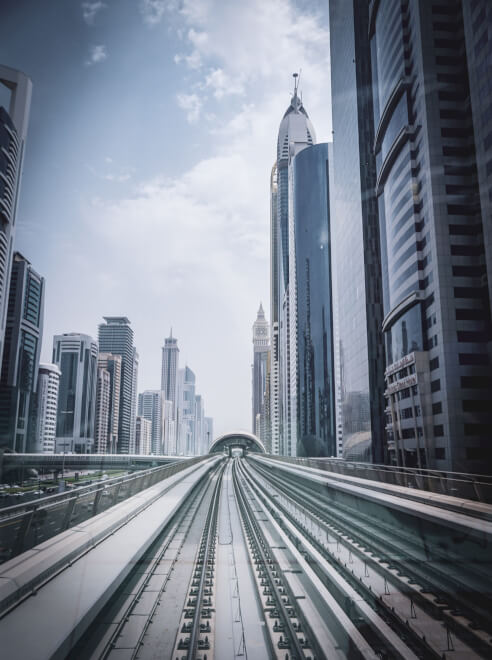
Green Line
The Green Line complements the Red Line by providing connectivity to areas that were previously underserved by public transportation. It connects Etisalat and Dubai Healthcare City, offering easy access to popular locations such as Dubai Creek, Dubai Museum, and the Gold Souk. The Green Line is particularly popular among tourists due to its proximity to historical landmarks and traditional markets.
Stations and Landmarks
Iconic Stations
The Dubai Metro boasts several iconic stations that captivate passengers with their architectural brilliance. One such station is the Burj Khalifa/Dubai Mall Station, which not only serves as a gateway to the world’s tallest building but also offers breathtaking views of the cityscape. The Mall of the Emirates Station is another notable stop, offering seamless access to the renowned shopping destination and its indoor ski resort.
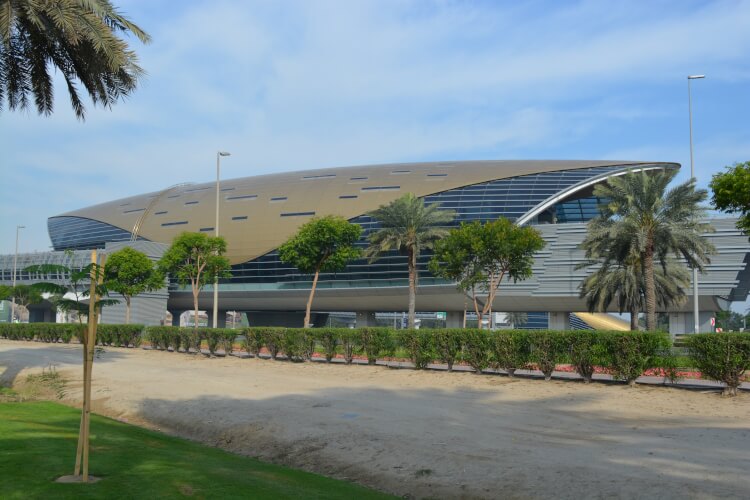
Connectivity to Major Landmarks
One of the key advantages of the Dubai Metro is its connectivity to major landmarks and attractions. Whether it’s exploring the historic Al Fahidi neighborhood, visiting the vibrant Dubai Marina, or experiencing the bustling atmosphere of Deira’s souks, the metro provides a convenient and affordable means of reaching these popular destinations. It eliminates the hassle of navigating through traffic and parking, allowing visitors to fully immerse themselves in Dubai’s rich culture and attractions.
Ticket Types and Prices
Nol Card System And Other Types
| Ticket Type | Description | Price (AED) |
|---|---|---|
| Red Ticket | Single journey ticket valid for a one-way trip within a fare zone | 4.00 |
| Silver Card | Rechargeable card for regular commuters | Varies |
| Gold Card | Rechargeable card with added benefits and privileges | Varies |
| Blue Card | Rechargeable card for students | Varies |
| 1-Day Pass | Unlimited travel for one day on the metro and other modes | 20.00 |
| 7-Day Pass | Unlimited travel for seven consecutive days | 50.00 |
| 30-Day Pass | Unlimited travel for 30 consecutive days | 180.00 |
| Silver Nol Card | Rechargeable card for regular commuters with integrated services | Varies |
| Gold Nol Card | Rechargeable card with added benefits and integrated services | Varies |
Please note that the prices mentioned are subject to change and may vary based on factors such as the type of card, duration of validity, and integrated services. It is advisable to check the official Dubai Metro website or inquire at the stations for the most up-to-date information on ticket prices.
Fare Zones and Pricing
The Dubai Metro fare system is based on zones, with the city divided into different fare zones. The fare is determined by the number of zones crossed during a journey, allowing passengers to pay only for the distance they travel. The fare structure is designed to be affordable and accessible, making the Dubai Metro an attractive option for both daily commuters and occasional travelers.
Retail Options
Retail Outlets within Stations
The Dubai Metro stations offer a plethora of retail options, making commuting an enjoyable and convenient experience. From grab-and-go eateries and coffee shops to bookstores and pharmacies, the stations cater to various needs of the passengers. These retail outlets ensure that travelers have access to essential services and amenities while on the move.
Mall Connections
Several Dubai Metro stations are seamlessly connected to popular shopping malls, further enhancing the travel experience. Passengers can alight at stations such as Mall of the Emirates, BurJuman, or Deira City Centre and directly enter the malls, saving time and effort. This integration of transportation and retail facilities reflects Dubai’s commitment to providing a holistic experience to its residents and visitors.
Timetable and Frequency
Operational Hours
The Dubai Metro operates on the following schedule:
- Red Line:
- Saturday to Wednesday: 5:00 AM to 12:00 AM (midnight)
- Thursday: 5:00 AM to 1:00 AM of the following day
- Friday: 10:00 AM to 1:00 AM of the following day
- Green Line:
- Saturday to Wednesday: 5:30 AM to 12:00 AM (midnight)
- Thursday: 5:30 AM to 1:00 AM of the following day
- Friday: 10:00 AM to 1:00 AM of the following day
Please note that these timings are subject to change, and it’s always a good idea to check the official Dubai Metro website or inquire at the stations for the most up-to-date information on the opening hours of the metro.
Frequency of Trains
The Dubai Metro boasts an impressive frequency of trains, ensuring that passengers experience minimal waiting time. During peak hours, the trains arrive at intervals of approximately three minutes, offering a swift and efficient mode of travel. Even during non-peak hours, the frequency remains high, allowing commuters to plan their journeys with ease.
Passenger Numbers and Success
Impact on Transportation
Since its inception, the Dubai Metro has witnessed a significant increase in passenger numbers, becoming the backbone of the city’s transportation infrastructure. The metro has played a crucial role in reducing traffic congestion on roads and highways, resulting in smoother and faster commutes. It has also contributed to a decrease in carbon emissions, aligning with Dubai’s sustainability goals and positioning the city as a global leader in eco-friendly transportation.
| Year | Annual Passenger Numbers (Millions) |
|---|---|
| 2009 | 6.4 |
| 2010 | 38.1 |
| 2011 | 65.4 |
| 2012 | 109.5 |
| 2013 | 137.7 |
| 2014 | 143.9 |
| 2015 | 164.3 |
| 2016 | 191.3 |
| 2017 | 204.9 |
| 2018 | 204.2 |
| 2019 | 204.6 |
| 2020 | 178.8 |
| 2021 | 122.2 (Estimated due to COVID-19 impact) |
| 2022 | 151.5 (Estimated recovery post-COVID-19) |
These passenger figures are approximate.
A better illustration of these figures is shown below in the chart. 2021 and 2023 were affected by the Covid-19 outbreak.
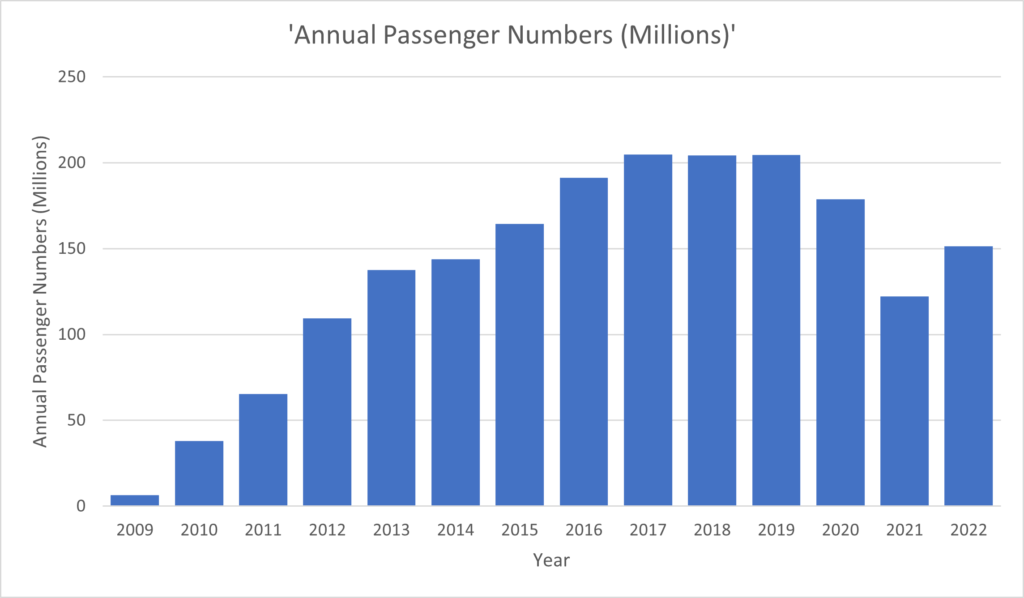
Positive Environmental Effects
The Dubai Metro’s emphasis on sustainability extends beyond reducing traffic congestion. The metro system utilizes advanced technologies to minimize energy consumption and carbon footprint. From regenerative braking systems to solar-powered stations, the Dubai Metro is a shining example of how modern transportation can coexist harmoniously with the environment.
Future Plans and Strategy
Route Extensions
The Dubai Metro continues to expand its network, with plans to introduce new lines in the near future. These upcoming lines will further enhance connectivity and accessibility within the city, providing convenient travel options to even more areas. The introduction of the Route 2020 line, which connects the Expo 2020 site to the existing Red Line, is a testament to Dubai’s commitment to continuous improvement and development.
In 2023 the Dubai Road’s & Transport Authority (RTA) is expected to announce tenders for the next phases of the project. This will be the Blue Line, which will extend the Green Line through the Dubai Creek Harbour Development,
Ras Al Khor, International City, Silicon Oasis, and Academic City. The Red line extension will extend from Rashidya, through Mirdif, and Warqaa, and then merge with the new Green line extension. Source
Video Tour
Conclusion
The Dubai Metro has become an emblem of Dubai’s forward-thinking approach to urban development and transportation. With its efficient operations, extensive network, and commitment to sustainability, the metro has revolutionized the way people navigate the city. Whether it’s commuting to work, exploring iconic landmarks, or indulging in retail therapy, the Dubai Metro provides a seamless and enjoyable experience for all. As the city continues to evolve, the Dubai Metro will undoubtedly play a vital role in shaping its future.
FAQ
- Is the Dubai Metro fully automated?
- Yes, the Dubai Metro is a fully automated system, operated by cutting-edge technology.
- What is the cost of a Nol card?
- The cost of a Nol card varies depending on the type of card and the initial balance loaded onto it.
- Can I use the Nol card on other modes of transportation in Dubai?
- Yes, the Nol card can be used on buses, trams, and even water buses in Dubai.
- Are there discounts available for frequent travelers on the Dubai Metro?
- Yes, frequent travelers can avail of discounts by opting for weekly or monthly passes.
- Are there luggage restrictions on the Dubai Metro?
- While there are no strict luggage restrictions, it is advisable to travel with compact and manageable bags.
- Is the Dubai Metro accessible for people with disabilities?
- Yes, the Dubai Metro is designed to be accessible for people with disabilities, with provisions such as elevators and designated seating areas.
- Are there plans to introduce more lines in the future?
- Yes, Dubai has plans to introduce new lines in the future to further enhance connectivity within the city.
- What is the frequency of trains during non-peak hours?
- During non-peak hours, the trains operate at intervals of approximately five minutes.
- Are there tourist passes available for the Dubai Metro?
- Yes, the Dubai Metro offers tourist passes that provide unlimited travel for a specified duration.
- Can I use my credit card to purchase a Nol card?
- Yes, credit cards are accepted for purchasing Nol cards at vending machines and customer service centers.
Useful Links
- More information about the Dubai Metro can be found here.
- Check out the Burj Khalifa which is located next door.
- The Dubai Mall is also nearby.
- Looking for some beach fun and retail therapy. Check our JBR Beach.
- Do you want to explore some history? Take a look at the Al Fahidi Historical Neighborhood.
- Love to play golf? Check out the best golf courses in Dubai.
- Love ships? Then check out the QE2 at Port Rashid.
- The heart of Dubai is the Dubai Creek.
- If you love flowers then you should visit the Dubai Miracle Garden.
- Most of the major malls like the Mall of the Emirates are connected to the metro.
- There is close integration with the local bus network as well.
- This is a great Dubai Travel Itinerary for different time periods visiting Dubai.
- Read about the flooding in Dubai in April 2024.
Key Takeaways
- The Dubai Metro is a modern, fully automated transportation system in Dubai, offering a convenient and efficient mode of travel.
- The metro system consists of the Red Line and Green Line, connecting various areas of the city and serving major landmarks and attractions.
- The Dubai Metro operates on the Nol card system, providing a cashless mode of payment for commuters across multiple modes of transportation.
- Ticket prices for the Dubai Metro vary based on the type of card and the duration of validity, catering to different travel needs.
- The metro stations feature retail outlets, providing passengers with a range of amenities and services, making commuting more enjoyable.
- Seamless connections between metro stations and popular shopping malls allow passengers to easily access retail and entertainment options.
- The Dubai Metro operates from early morning until midnight, offering an extensive window for commuting throughout the day.
- The frequency of trains is high, ensuring minimal waiting time for passengers, even during non-peak hours.
- The Dubai Metro has played a significant role in reducing traffic congestion, improving air quality, and contributing to Dubai’s sustainability goals.
- Future plans for the Dubai Metro include route extensions, introducing new lines, and implementing sustainability initiatives to create a greener and more connected city.
